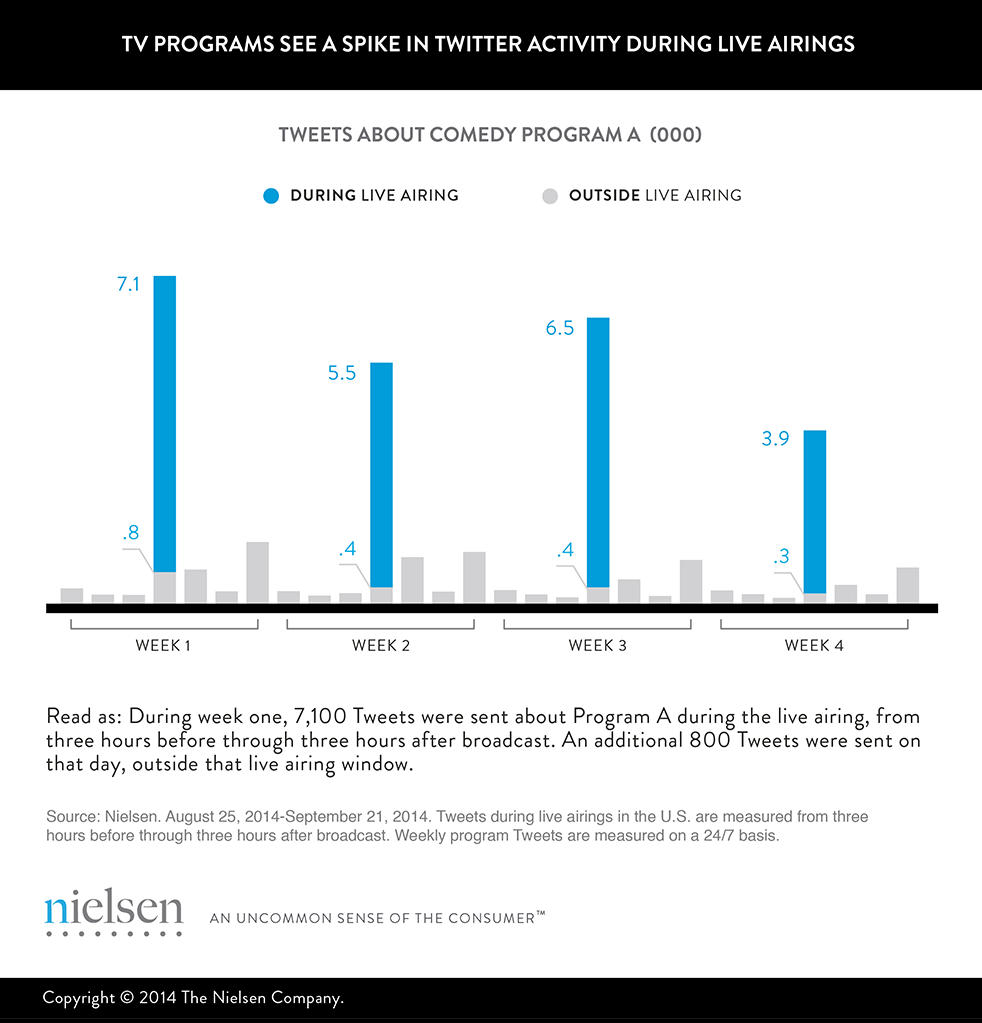 Social TV is no longer a new phenomenon. Millions of people take to Twitter to share their passions about their favorite programming in the heat of the moment—as the moments happen. While the majority of the conversations happen during live broadcasts, as networks look to boost fan engagement and build program audiences, networks and agencies can now quantify how much of the discussion happens outside of the live airing window for more than 650 English and Spanish language programs.
Social TV is no longer a new phenomenon. Millions of people take to Twitter to share their passions about their favorite programming in the heat of the moment—as the moments happen. While the majority of the conversations happen during live broadcasts, as networks look to boost fan engagement and build program audiences, networks and agencies can now quantify how much of the discussion happens outside of the live airing window for more than 650 English and Spanish language programs.
To gain insight into when social TV conversations happen, Nielsen Social recently analyzed 24/7 Twitter TV activity around 72 weekly broadcast and cable series programs in August and September 2014. As expected, the majority of weekly Twitter TV activity—68% of Tweets—takes place within the live airing window around a new program airing (three hours before through three hours after). The percentage varies for different types of programming, ranging from 55% for comedies to 70% for reality programs.
The chart below shows daily Tweets for a typical comedy program over four weeks. The spikes demonstrate how live airings dominate the overall weekly Twitter TV activity.

In many cases, a higher level of Twitter TV activity during the live airing window translated to higher activity during the three following days. The chart below shows this pattern for six airings of a reality program. Networks whose programs generate more Tweets during the live airing can likely continue engaging audiences in the days that follow.
This leads to this question: “What are people Tweeting about in between live airings?” We broke down Tweets into four categories for this analysis of activity taking place when programs are not airing live:
1)Program viewing (46%): Watching previously aired episodes (e.g., online, DVR, video-on-demand, on-air repeats). For example*: “I can’t believe what just happened to Character X. #ProgramA”
2)Program enthusiasm (36%): General excitement or anticipation of upcoming episodes. For example: “So excited to see what happens to Character X on #ProgramA on Tuesday!”
3)Star-related discussion (13%): Referencing or engaging with talent while talking about the program. For example: “@Star_of_ProgramA what an amazing performance on #ProgramA, loved it!”
4)Program Promotions (4%): Seeing a promotion for a program online or on TV or participating with program-sponsored content, such as quizzes or polls. For example: “Just took the quiz “Which @ProgramA character are you?” and got Character X.”
*Example Tweets are for explanatory purposes only.
The breakdown of Tweets between these thematic categories varies across programs. The right side of the chart below compares two drama programs. Program 1 saw a substantially higher share of Tweets related to viewing, while Program 2 enjoyed a higher share of Tweets related to program enthusiasm and star-related discussion.
In short, social TV happens around the clock. So even though live airings account for the lion’s share of weekly Twitter TV activity, networks and agencies now have the opportunity to explore how and why audiences engage on Twitter between live airings. The findings from this recent study highlight considerable room for networks to boost audience engagement in between episodes through repeat program airings, stars and promotions. It’s also worth noting that high levels of Twitter activity during live airings can have a spillover benefit during the following three days.
With viewers talking about TV programming on Twitter throughout the week, this around-the-clock conversation can open new doors for networks, agencies, and advertisers. Based on activity levels and topics of conversation, industry players can more holistically understand viewers and refine how they engage them to maximize earned media and ultimately build program audiences.


